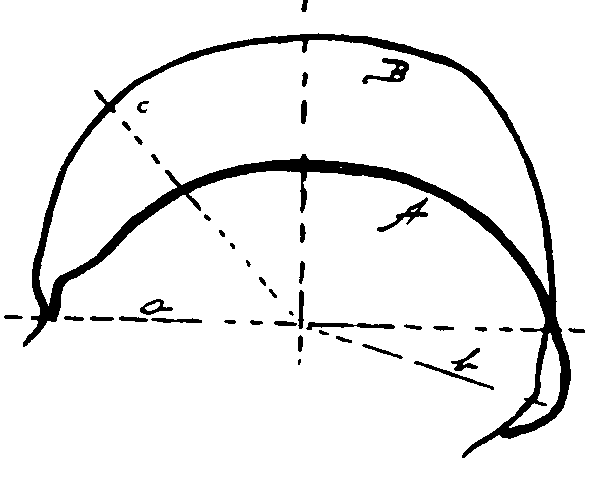
Last update: 1998-05-01
![]()
Webdesign by:
![]()
Phrenology and Paleo-Anthropology
Introduction
Phrenology can deliver an interesting contribution into the science of paleo-anthropology, by analysing the relative development of various cranial features and their impact on the ascending developing of the human species. This section will gradually be developed.A Psychological Analysis "out-of-the-ordinary"
The following figure gives the skull profile (A) of a prehistoric being which lived many thousand years before our era. We invite you to unveil the psychology of this vanished race, using Phrenological analysis.
A: Profile of the Pithecanthropus skull found on Java by Dr. E. Dubois
B: Profile of a contemporary human skull, drawn on the same scale for comparison purposes
Let's now take a look at the developement of Phrenological
faculties in this prehistoric being.
Were they gifted with Benevolence, Causality?
Just compare the two profiles...
Don't complain to much about the "impossible" characters which may
surround you. Just imagine having to live with this one! Where these creatures
would be able of?
Now have a look, using the same method, to the passions or the dominating
faculties, through the comparison of the relative length of the radii.
It is immediately obvious that the radius b (Amativeness:
reproductive and sexual instincts) beats the record. Here it is longer
than the radius c relative to the moral faculties and even exceeds
the dimensions of the contemporary human skull! This particularity, showing
a brutal, impulsive sexuality, casts gloomy perspectives on the social
life of these creatures.
The radius a, referring to the perceptive
faculties is enormous relative to the height of the skull.
The psychological profile and the "intellect" of the Pithecanthropus
presented here are so rudimentary, its animality is so obvious, that it
is hard to believe that this species might have been gifted with a moral
conscience.
(This description was adapted from Prof.
Bouts "Les Grandioses Destinées", with the kind permission of
the author.)
The characteristics of these pre-historic types are further analysed in the next section.
Disclaimer:
No one but the author of these pages
accounts
for their contents.